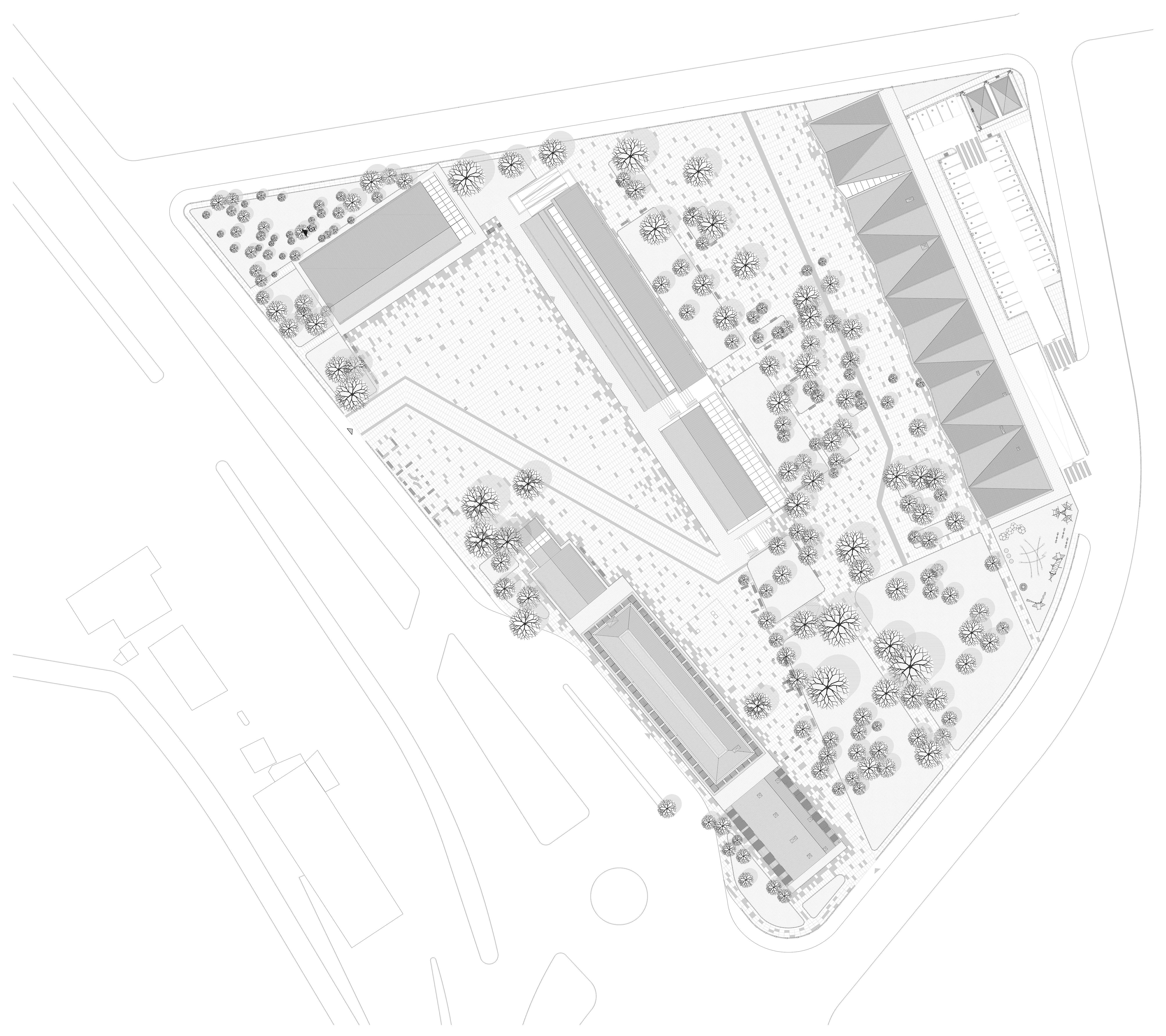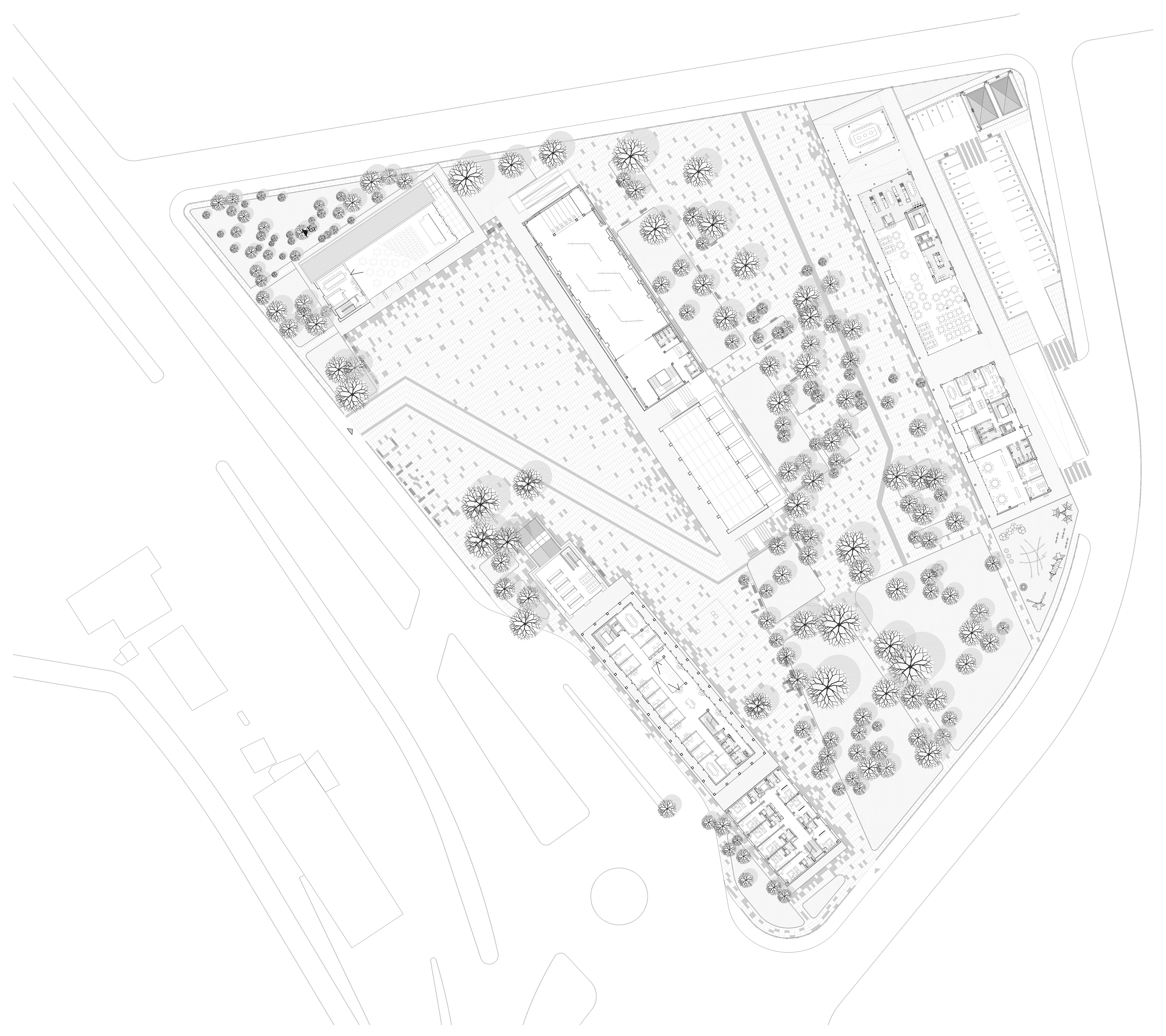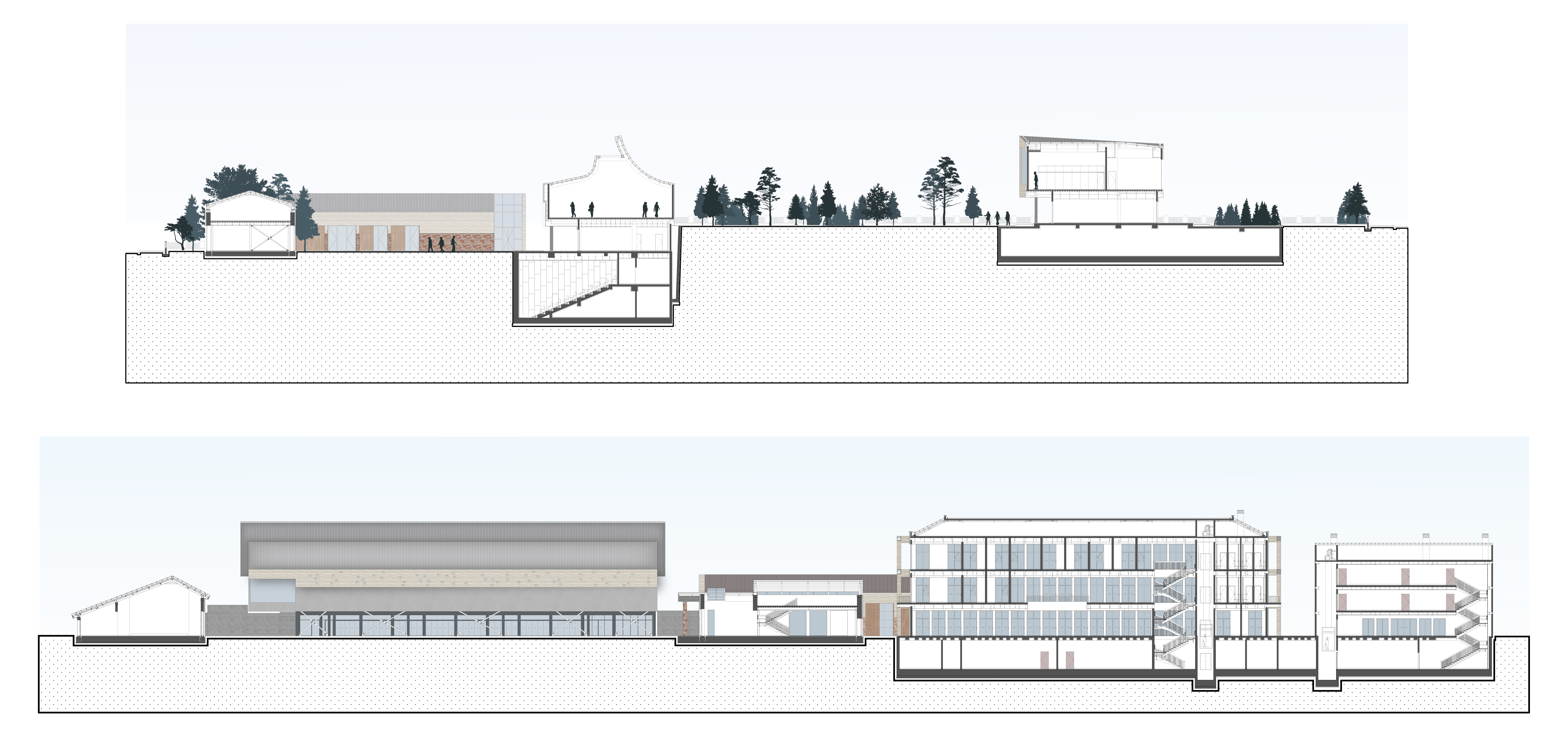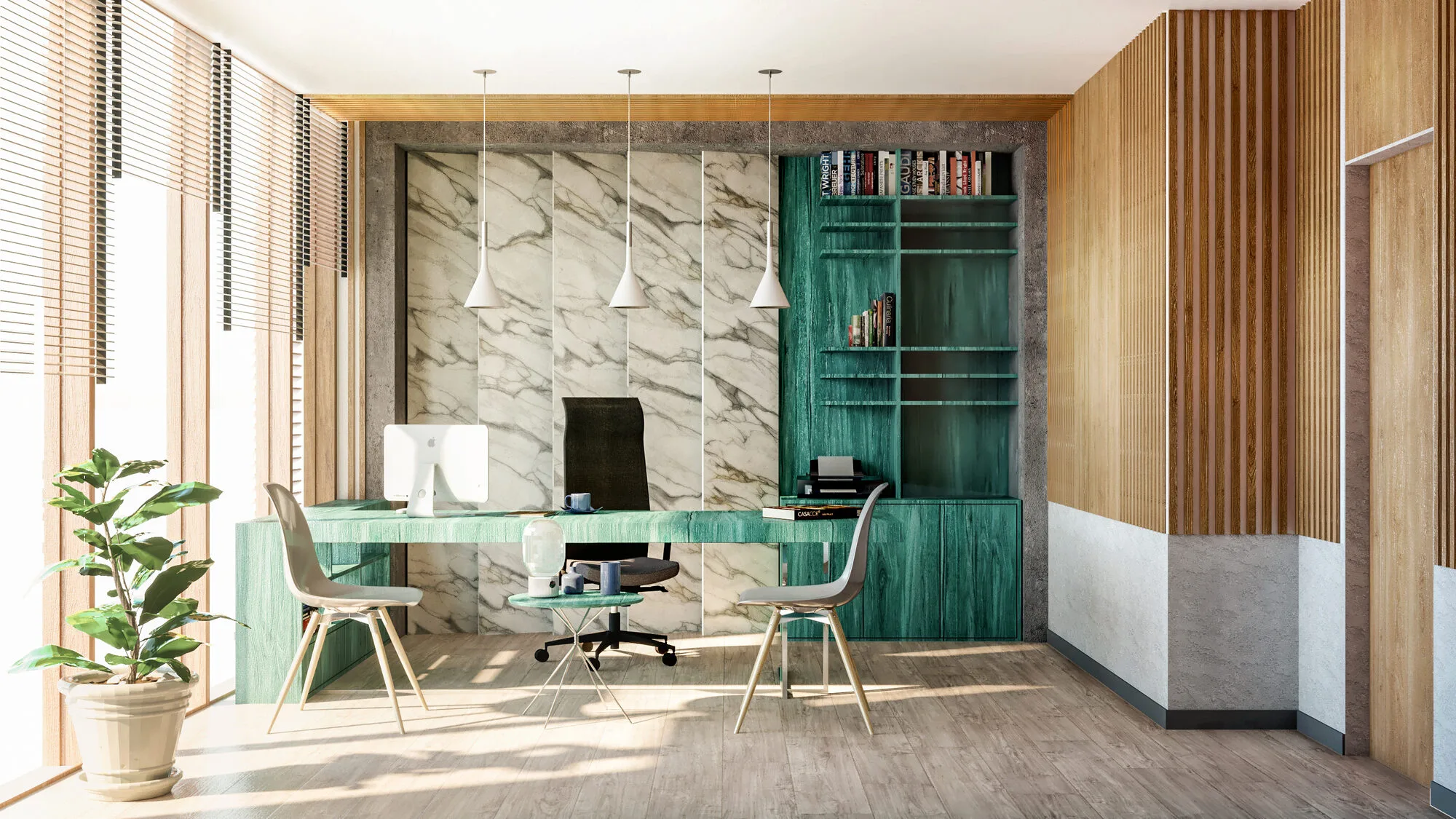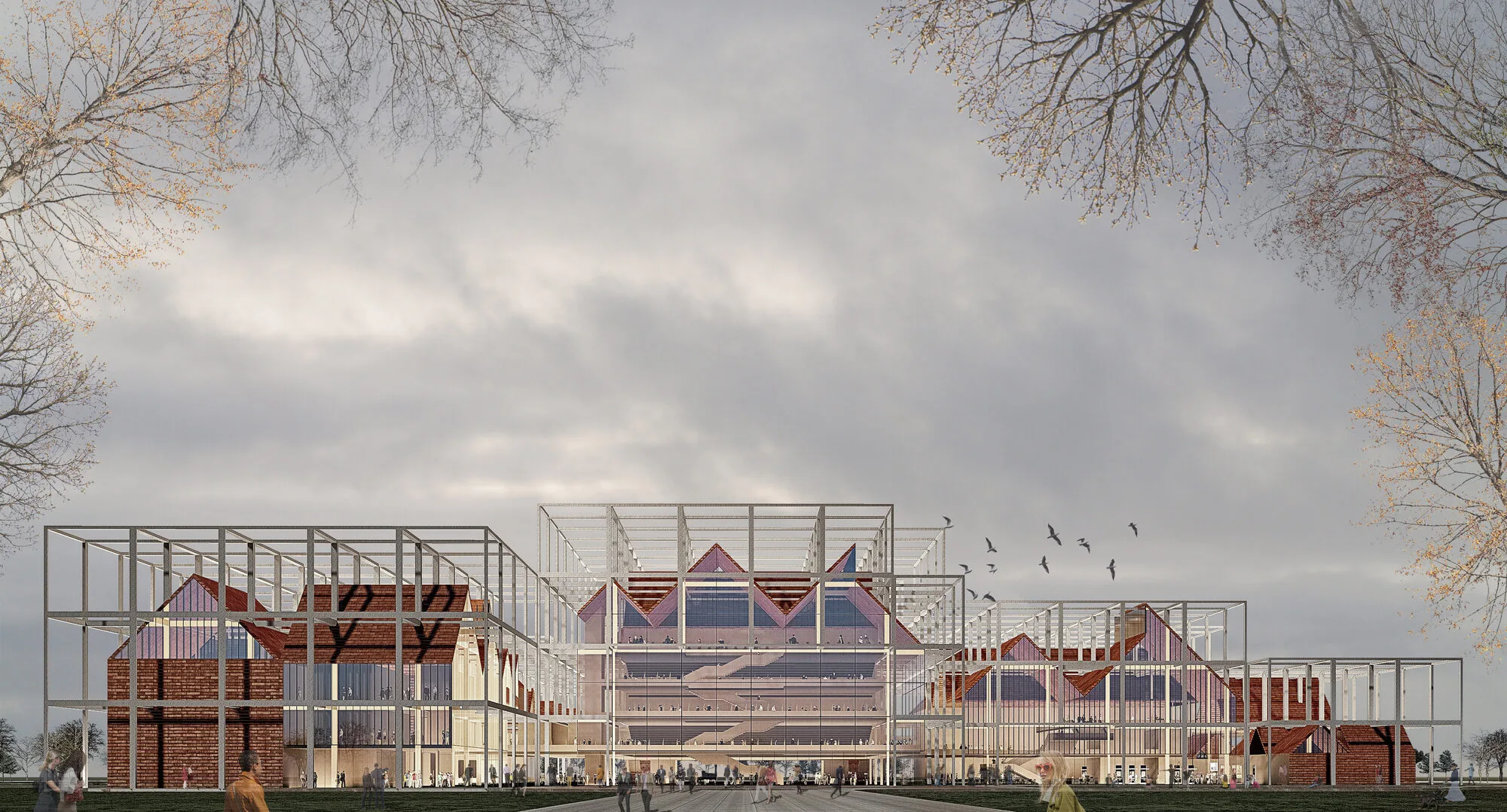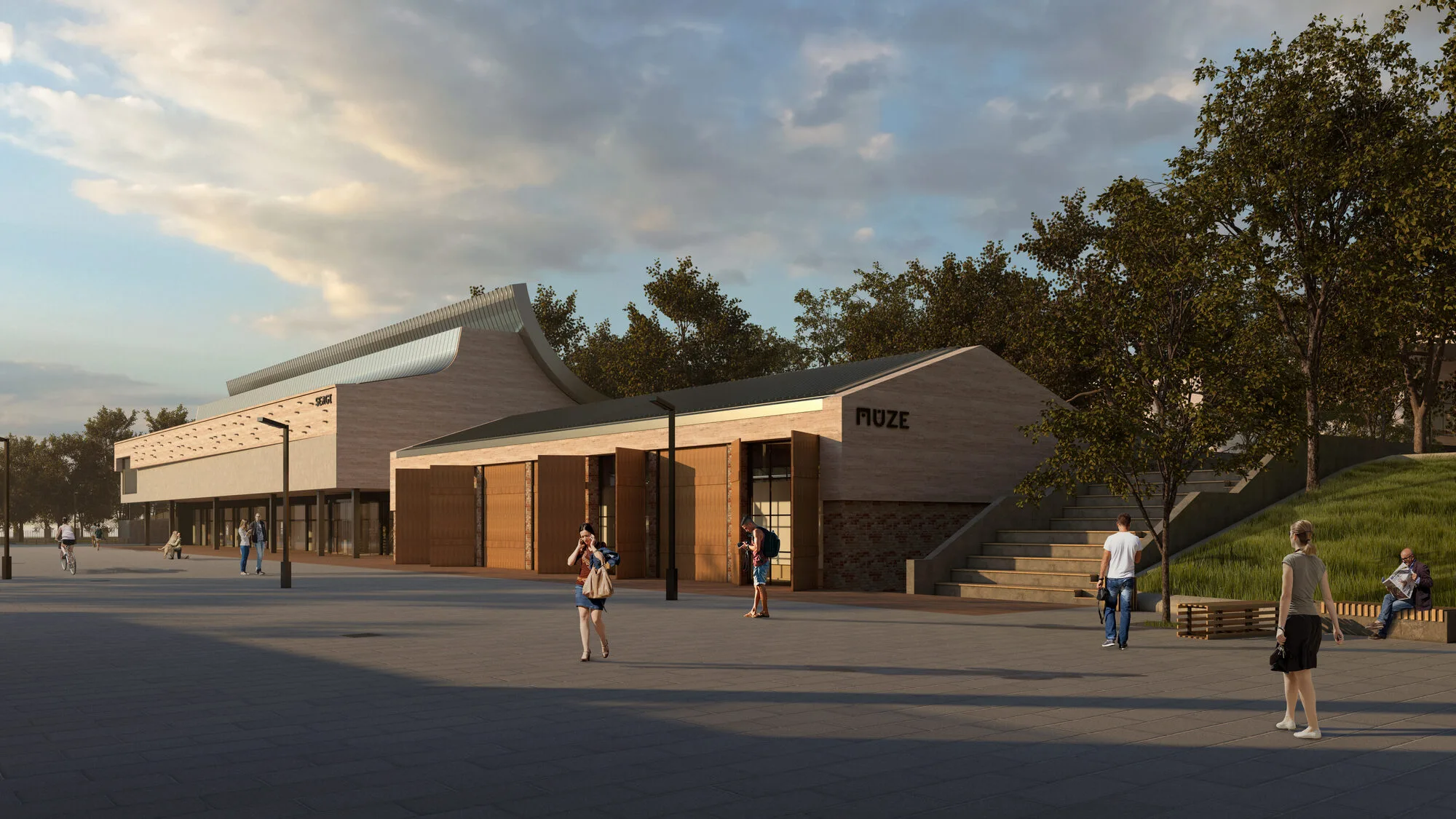
Kirsehir Culture Park Complex
Kirsehir Culture Park
The design site is located on the Ankara-Kayseri road, towards Kırıkkale from Kırşehir, on the city's periphery within the urban development axis. Previously operating as a branch of the "General Directorate of Highways," the facility was transferred to the Kırşehir Municipality to be redesigned with a focus on social use and collective production. Unlike a typical cultural center contained within a singular volume, the facility’s redesign utilizes some existing structures, transforming into a complex with a more fragmented morphology. This process emphasizes "institutionalization" over a monolithic approach. Consequently, all potential public interaction points within the site are shaped by both structural and organic patterns, ranging from architectural elements to landscaping features.
The site is bordered to the south by the Ankara-Kayseri road, a viaduct-supported highway with two lanes in each direction, ensuring swift traffic flow. The design's southern orientation is intended to maintain visual engagement with passersby, leveraging the fast-moving traffic to reinforce the site's visibility. Access to the city center is provided via connection roads beneath the viaducts, linking Kırşehir to both Ankara and Kayseri. To the north and west, low-density residential areas consisting of 4-5 story buildings support the concept of an inclusive urban profile. To the east, there are public campuses housing hospitals and other healthcare facilities.
Kirsehir Culture Park Complex
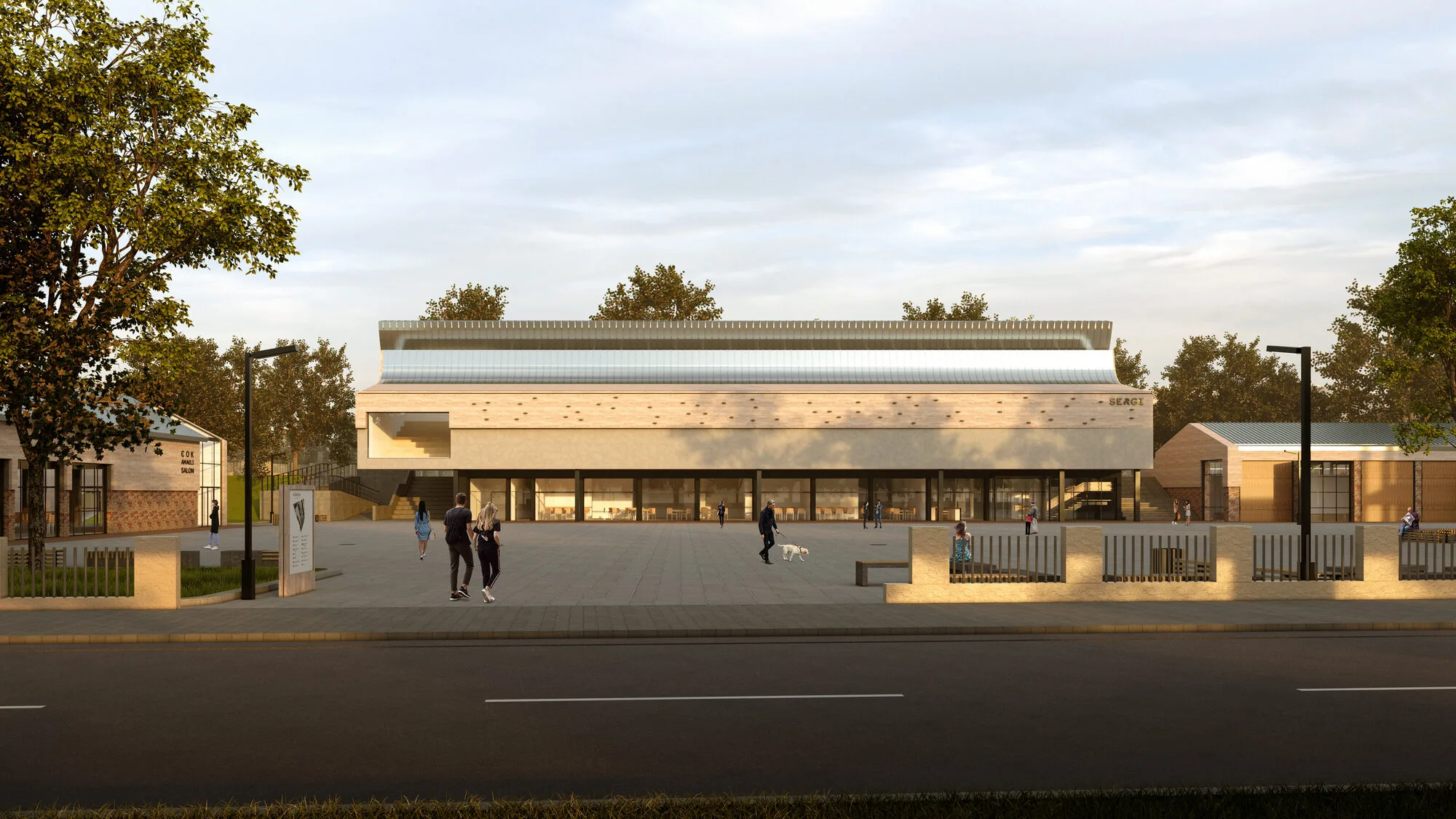
Site Analysis
The site comprises approximately 25,000 m² across two parcels. Historically used by the General Directorate of Highways, the existing structures include parking and repair areas for heavy-duty vehicles, along with storage spaces for road construction materials. Within the site, there are also administrative offices and housing units originally built for employees.
The main entrance is located on the southern side, connecting to the city center. Upon entering, one encounters the gatehouse, the "Nizamiye," to the right, followed by storage depots and adjacent housing blocks. To the left, there is a workshop building and adjoining administrative offices. Further into the site, the topography rises, revealing two distinct elevation levels that organize the site. At the higher level is a semi-open "Salt Depot" used for storing de-icing materials for roads.

One of the site’s key features is a cluster of mature pine trees, which will be preserved and integrated into the design. The existing greenery will be enhanced with additional landscaping elements to maintain the natural aesthetic.
Regarding the existing structures, some possess unique structural or architectural characteristics, making them suitable for reuse, while others are less distinguished and will be demolished. A breakdown of the notable buildings includes:
- Nizamiye: A single-story structure with a gabled roof, divided into two functional components: a smaller office space and a larger equipment storage area. Due to its strategic location and architectural features, it will be preserved and repurposed as a library.
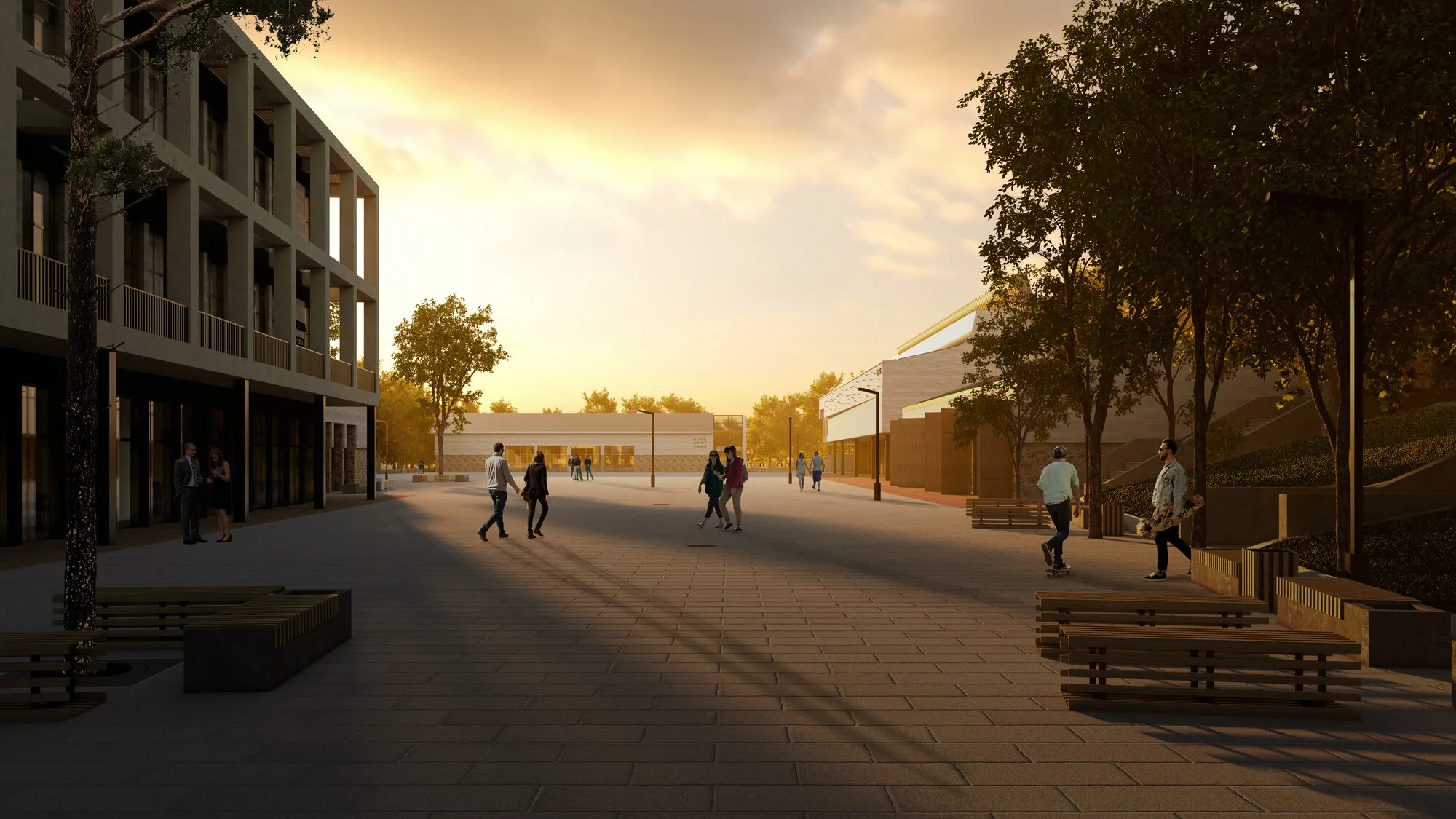
- Storage Depots: These single-story structures with large open spans are covered by gabled roofs supported by timber frames. Due to their architectural merit, particularly their thick masonry walls (60-70 cm of solid fired brick), they will be preserved and converted into exhibition spaces.
- Housing Block 01: This adjacent block, physically separated by a dilatation joint, consists of 2+1 apartment typologies across multiple floors. Due to its conventional design and lack of significant architectural value, it will be demolished.
- Workshop: Like the storage depots, the workshop features large open spans supported by steel trusses. However, the administrative annex lacks architectural distinction and will be demolished, while the workshop itself will be preserved for multi-purpose event space.

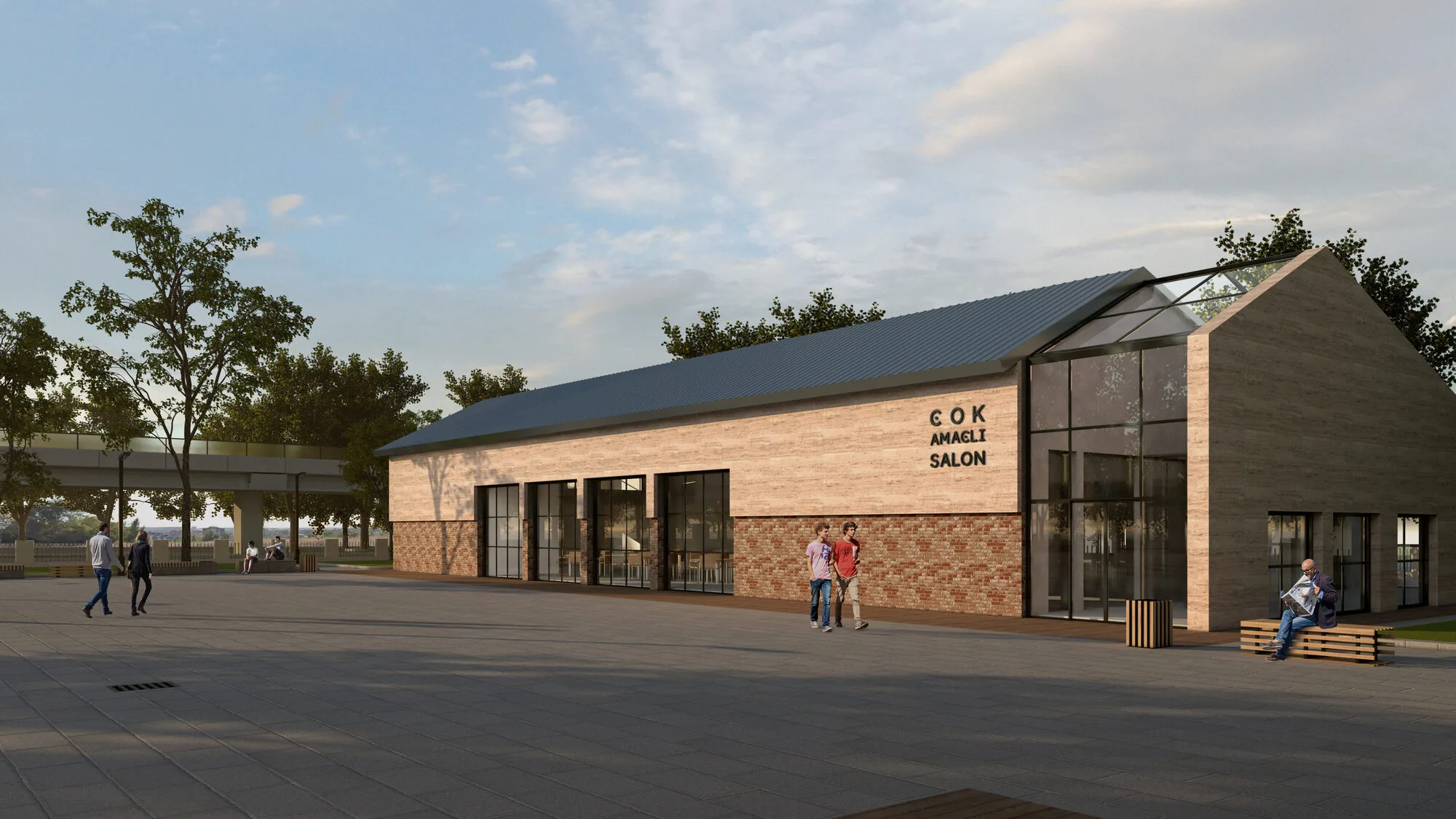
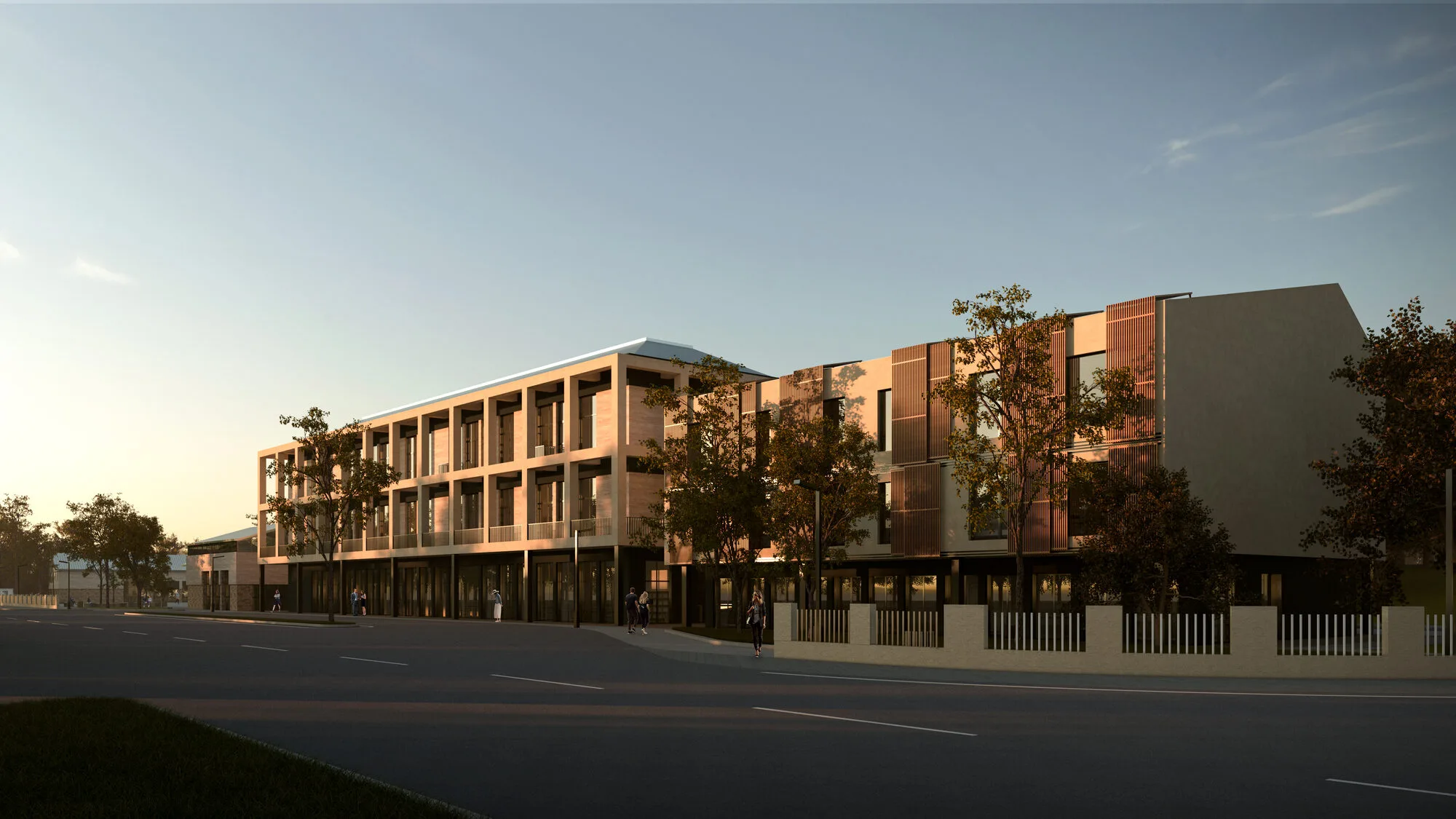
- Housing Block 02: A two-story residential block situated near the workshop, this structure lacks distinguishing features and compromises the spatial cohesion of the site. It will be demolished.
- Guesthouse: Located behind the Nizamiye and facing the Ankara-Kayseri road, this single-story building contains 3+1 apartment units. Due to its structural limitations, it will be demolished to make way for a more efficient residential space.
- Salt Depot: Positioned at the upper level of the site, this semi-open structure features perimeter walls of local stone with a steel gabled roof. The walls will be preserved, while the roof will be removed, and the structure repurposed as a cocktail lounge.
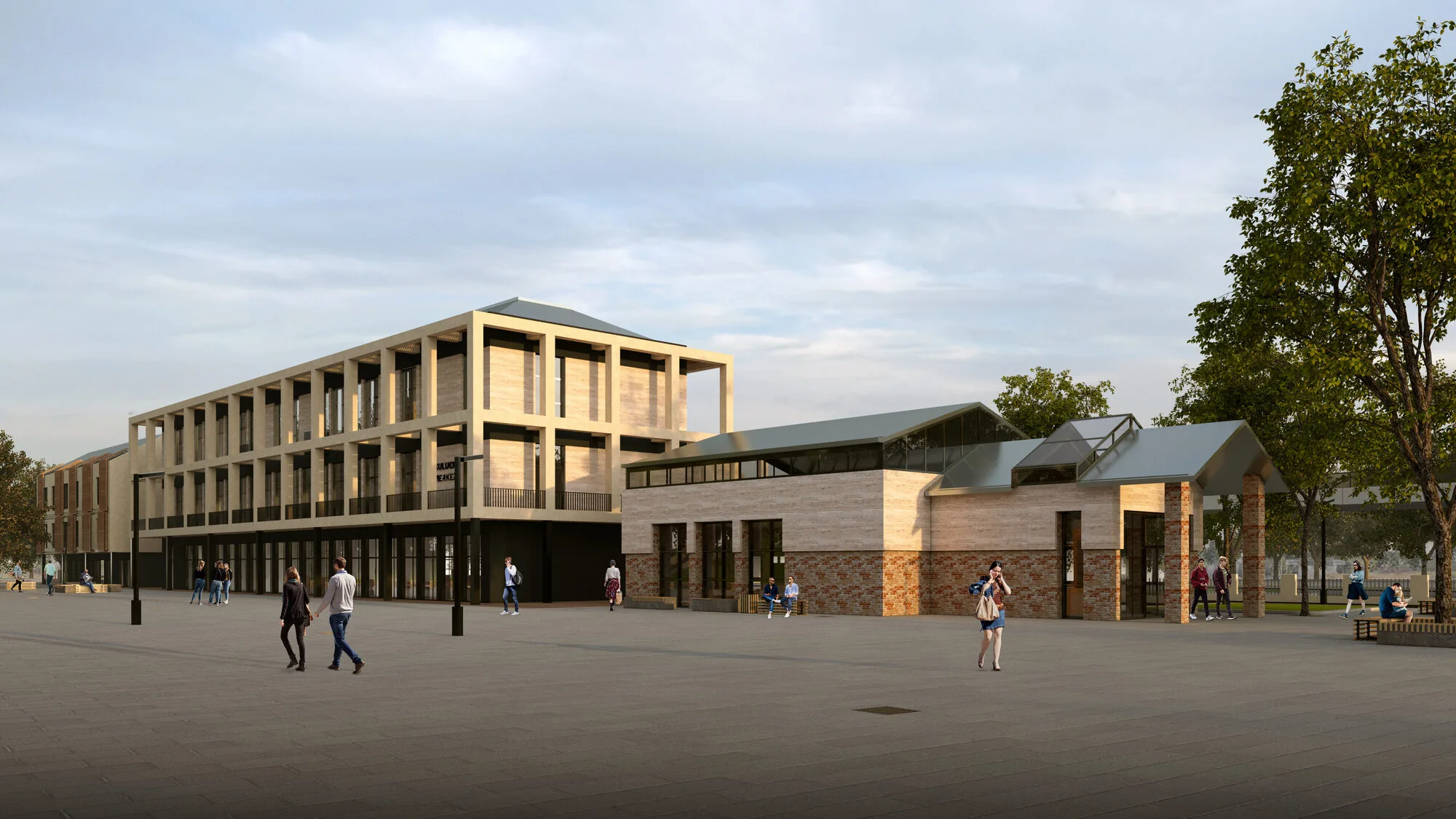
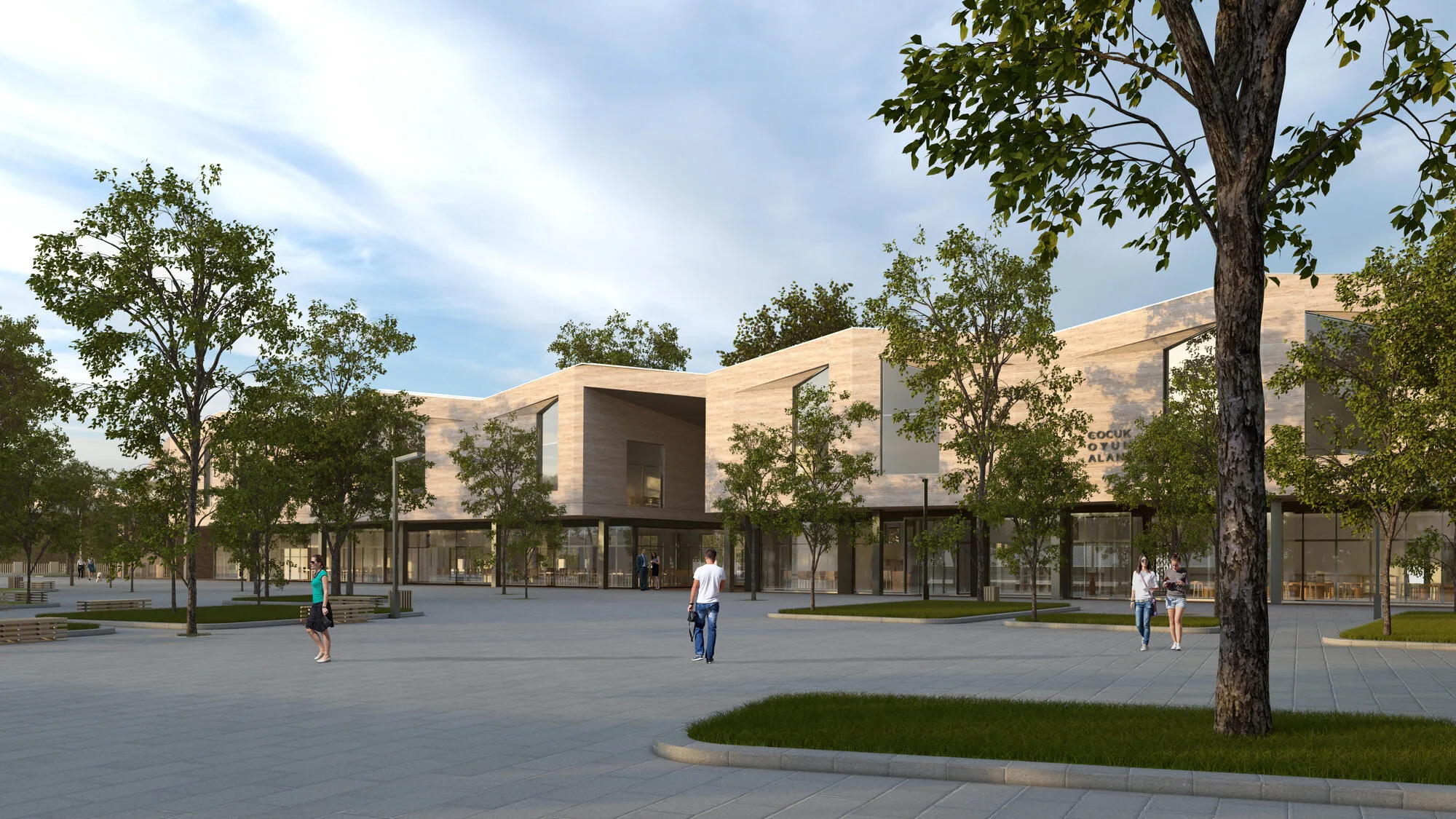
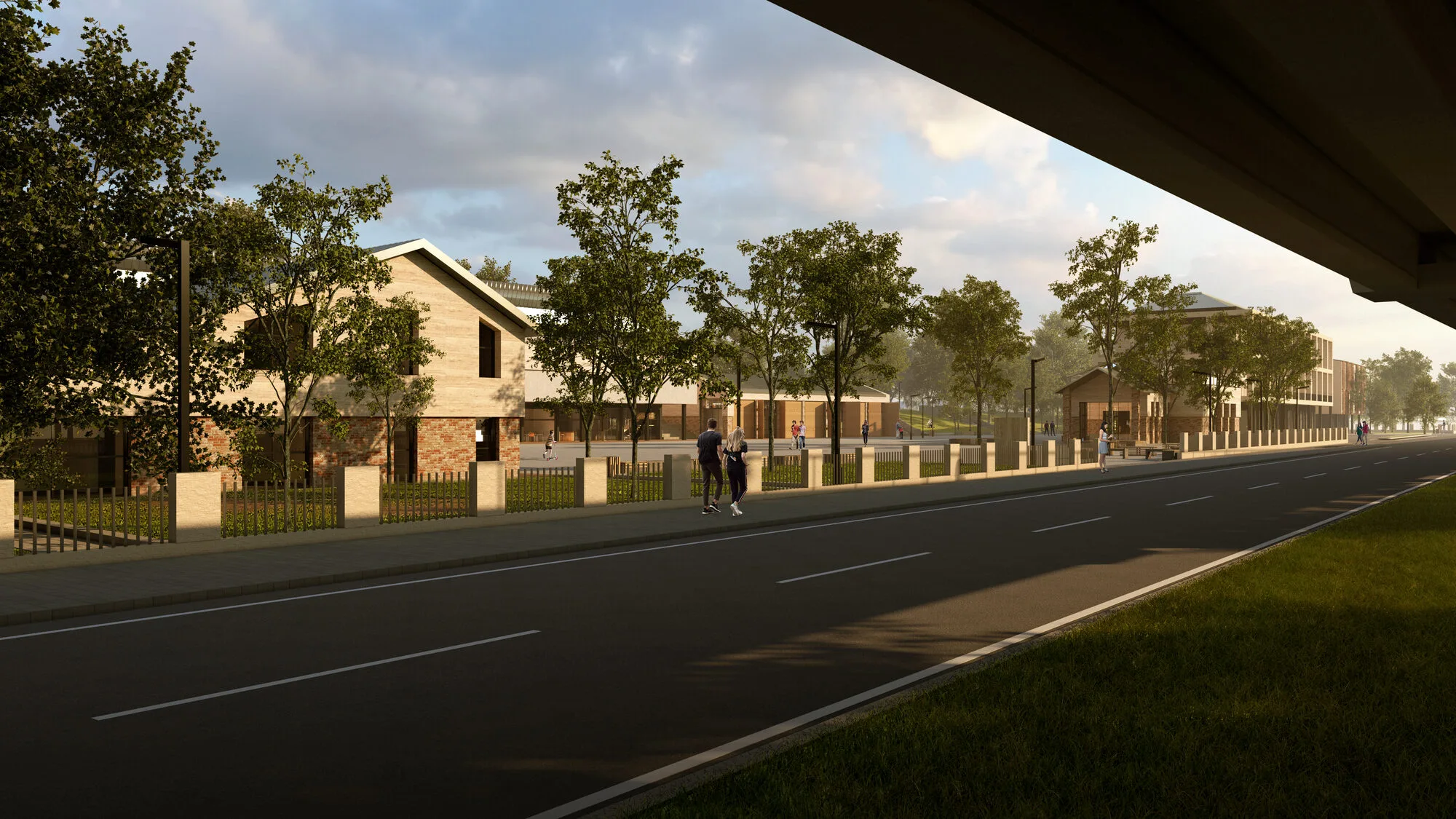
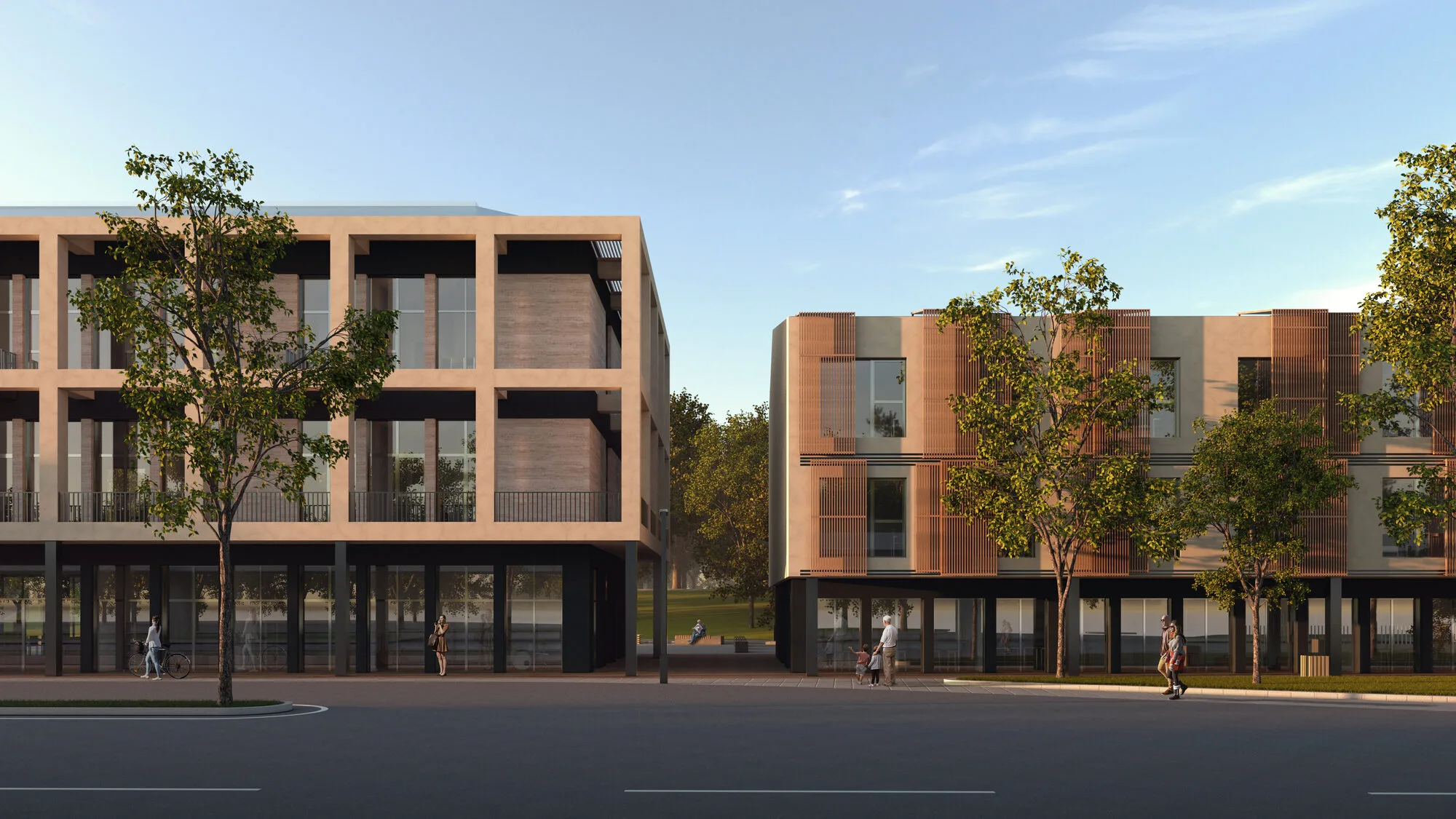
Adaptive Reuse
Kırşehir, with its rich cultural heritage, traditions, and historical architecture, as well as its ethical values rooted in the "Ahilik" tradition, is an important cultural cradle in Anatolia. However, there is a lack of collective spaces that support the continuity and diversification of these values. This project aims to address this by transforming the site into a "Culture Park" that accommodates various cultural and social activities. These include:
- Gastronomy
- Cultural heritage preservation
- The Ahilik tradition and community solidarity
- Oral tradition and intangible cultural assets
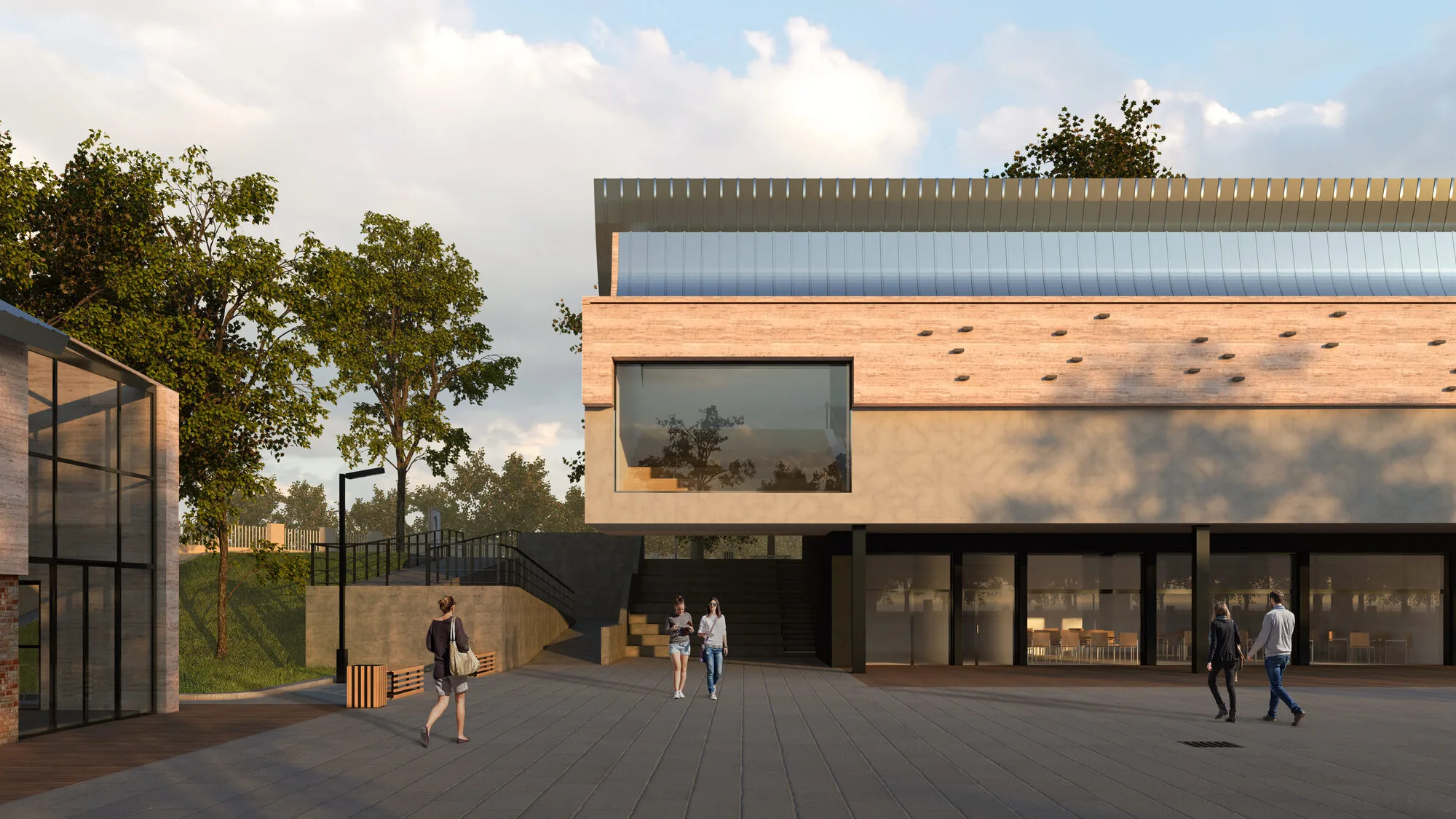
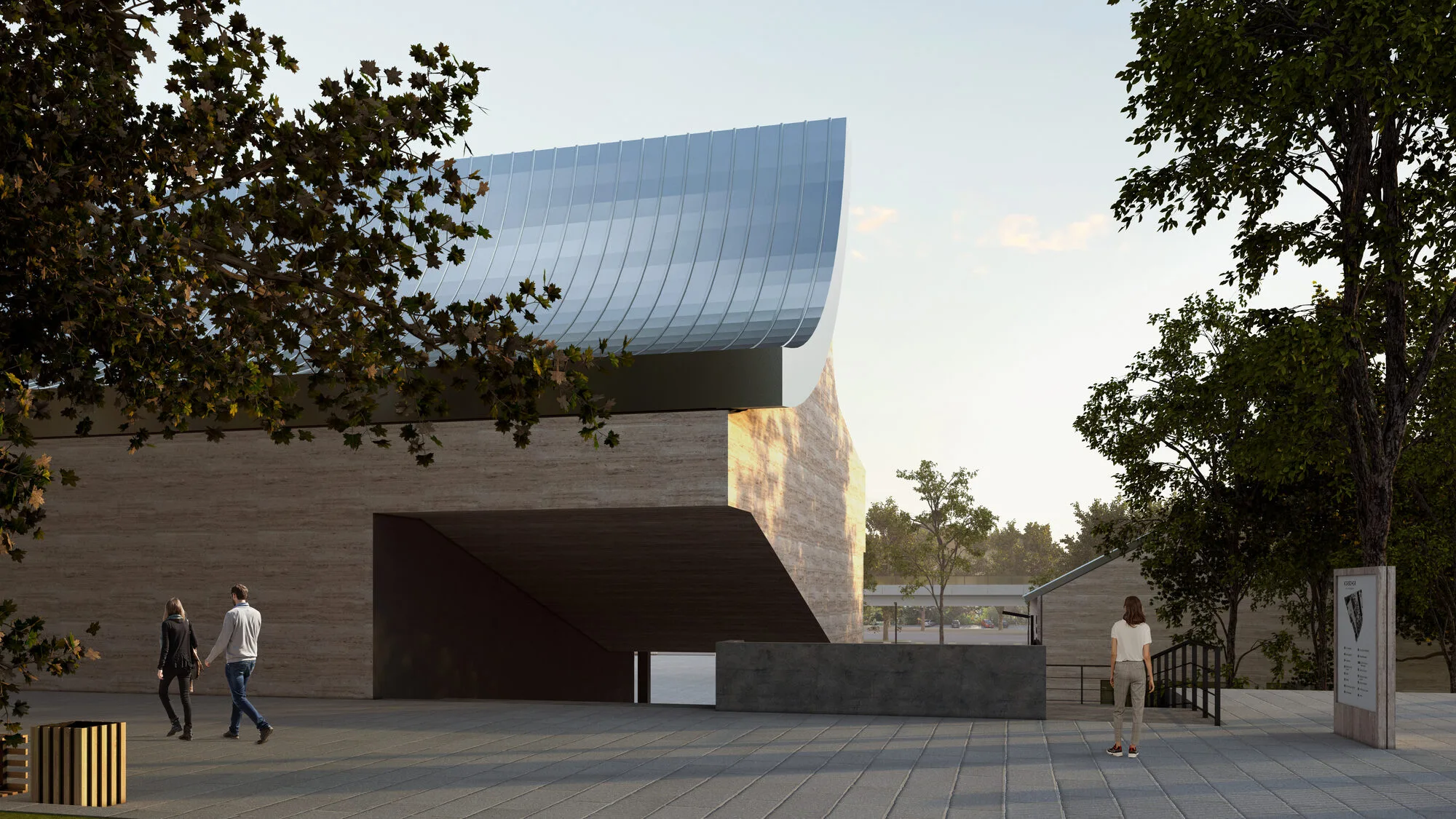
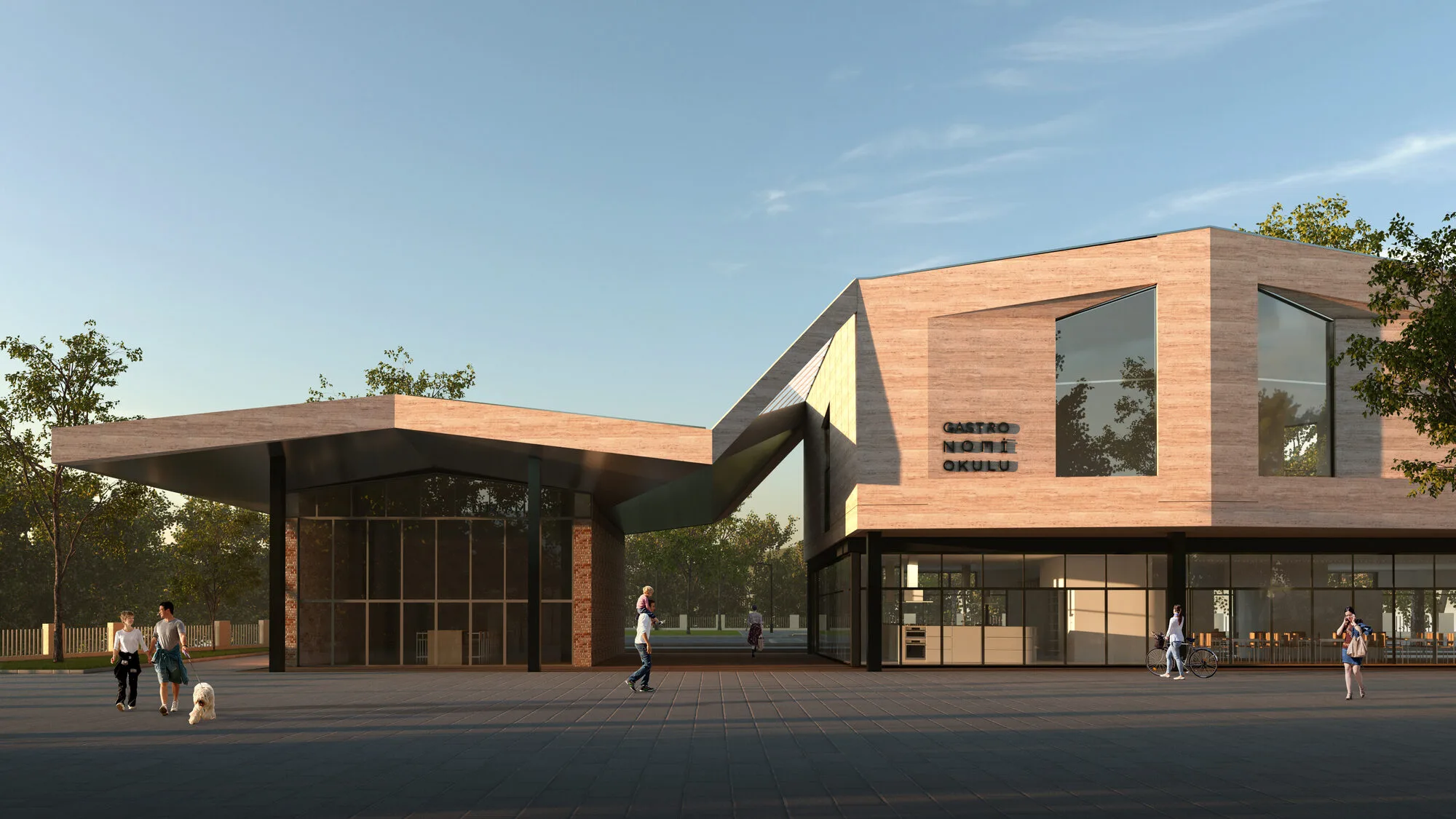
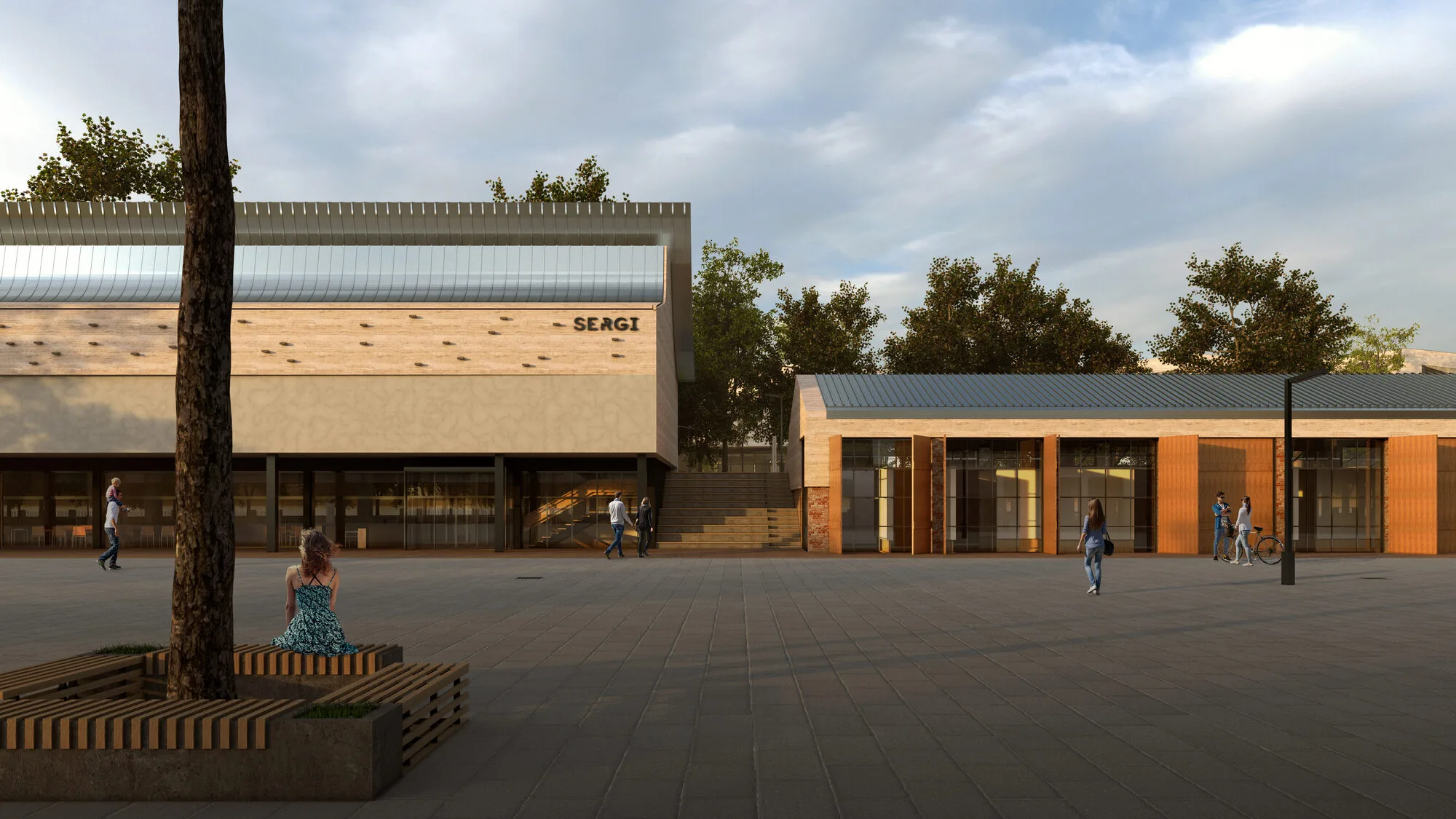
Approach to Existing Structures
Most of the preserved buildings consist of thick, solid masonry walls. The workshop building, however, features a steel-framed structure with supporting columns extending down to the foundation. These structural characteristics will be retained in the design.
Many of the buildings’ facades are covered with plaster from past renovations, painted in the orange color traditionally associated with the General Directorate of Highways. However, beneath this layer, solid fired-brick components are visible, particularly in the storage depots, where the thick masonry walls contribute significantly to the building's structural integrity. These brick elements, both for their aesthetic and structural qualities, will be carefully preserved during the restoration process.
The adaptive reuse strategy combines conservation and contemporary intervention, ensuring the site's historical layers remain legible while introducing new uses to support the cultural park’s vision.
